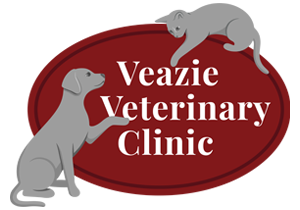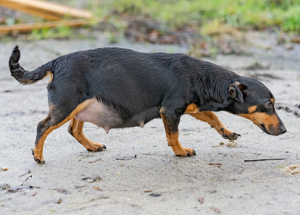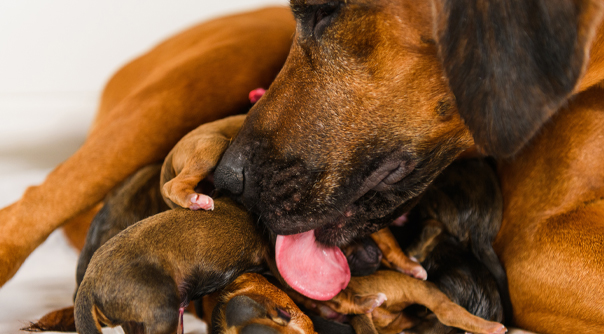Responsible Breeding
Responsible breeding of dogs can take a lot of time and effort. The reason to breed is to advance the breed by passing along a dog’s excellent qualities compared to the standard. The parent dogs should be healthy and have a good disposition.
Preparing for Breeding
Responsible Breeding
The motto of responsible breeders of purebred dogs is “breed to improve”.
- Study the breed standard and go to dog shows.
- Meet with other breeders so that you have a good understanding of what features to look for.
- Breed standards are not just about achieving a certain “look”.
- For most breeds the “look” is derived from features found in healthy dogs.
- For example, the gait is very important in many breeds. If a dog has hip dysplasia, the gait may be altered, so having a good gait is one indicator of healthy hips.
When you know what to look for, examine your dog with a critical eye.
- Ask other breeders to help you, since it can be hard to find faults in your own beloved dog!
- Be honest about the dog’s temperament. A dog that is shy or fearful with strangers may not be worth breeding, even if it is the best dog in the world at home.
- This information will help you to decide not only whether to breed, but also which dog to breed to if you do move forward.
- You will want to choose a mate that has strengths where your dog has weaknesses in order to “breed to improve”.
Making the Commitment
Responsible breeding requires a commitment to pre-breeding testing, care of the pregnant mom, dealing with possible complications during birth, and an intensive, eight-week period of puppy care. While it might seem that nothing is more natural than allowing dogs to breed, in fact there are many ways in which complications may arise. Many breeds have reproductive problems, such as infertility or an inability to deliver puppies naturally. Breeders need to be emotionally and financially prepared to deal with these issues should they arise.
After whelping, most breeders have a person awake with the new mother and her pups around the clock for at least the first several days. Even once everyone is settled in, there is enough clean-up and monitoring to make it a full-time job! As the puppies grow, they need socialization and training to give them a good start.
And when it comes time for them to go to their new homes, a responsible breeder spends considerable time interviewing and selecting the new families with care. Most breeders prepare a contract with the buyers, including a clause stating that if the new owner cannot care for the dog, the dog is to be returned to the breeder for placement. In the end, breeding dogs is full of rewards, but rarely results in financial gain.
Why Should You Breed?
There are many unwanted dogs in shelters across the country, so the decision to add to the canine population must be made carefully. While it sounds attractive to breed a beloved dog so that you can have another like it, there is no guarantee that the puppies will be just like the parents. Also, dog breeding is time-consuming, often expensive, and sometimes has serious complications for both the dam and the puppies.
The reason to breed a dog is to produce healthy, good-tempered dogs which will help to improve the breed. The decision to breed your dog starts with education. The national breed club is a good place to start, giving information about the breed standard, recommended tests for heritable diseases, and alerts about current issues.
Associations such as the American Kennel Club and the North American Versatile Hunting Dog are also good sources for information. Books are available with information specific to breeding, pregnancy and puppy care. Going to dog shows allows you to see your breed in action, and is a wonderful way to connect with other breeders. And of course we are here to help you with this important decision as well!
Canine Breeding Options
Natural cover
Artificial insemination
Artificial insemination means that the semen is collected from the male, examined, and deposited in the female by a person. The advantages if this are that there is no direct dog-to-dog contact, so there is no disease transmission or injury, the dogs do not have to be in the same place at the right time, and the dogs do not have to be willing to breed. Additionally, the semen is examined prior to deposition, which is helpful in determining the cause of breeding failures. Semen can be used fresh, fresh-chilled, or frozen, and it can be deposited in the female by vaginal, trans-cervical or surgical techniques.
Types of semen
- Fresh semen
Fresh semen means that the semen is collected from the male, examined, and used immediately in the female. It can be used “as is”, or centrifuged and re-suspended in a semen extender. This technique is used to avoid direct contact (and thus disease transmission) and to permit assessment of the semen quality. Knowing the semen quality is necessary in interpreting the cause of failure to conceive.
- Fresh chilled semen
Fresh chilled semen is the same as fresh, with the exception that it is always centrifuged, re-suspended in semen extender, and then chilled to permit storage for up to three days. This technique has the same advantages as above, plus the dog and the bitch can live some distance apart. Typically, the semen is sent overnight express and the bitch is inseminated the following day. The semen is evaluated again prior to insemination.
- Frozen semen
Frozen semen is the same as fresh chilled, with the exception that special techniques are used to freeze the semen (in straws or as pellets) for indefinite storage in liquid nitrogen, and the thawed semen can only be used for transcervical or surgical inseminations. Freezing semen can only be performed by trained personnel, and if it is to be used to produce an AKC certified litter, the individual producing the frozen semen must be certified by the AKC. There are also specific criteria that need to be met prior to collection of the sample. A service fee will be charged to maintain the sample until such time as the owner wishes to use it.
We are now offering this service on a limited basis. Please call us at 207-941-8840 to speak with one our reproduction team members for more information.
Types of insemination
- Vaginal
This technique is done with the bitch awake, and is well-tolerated by most bitches. A long, thin, semi-rigid plastic tube is used to insert into the vagina to the level of the cervix, and the semen is deposited there. This is the most common method of artificial insemination, with very good conception rates. Either fresh or fresh-chilled semen can be used for this technique. This is generally done on days 3 and 5, or 4 and 6 after the LH peak (see Estrous Cycles and Timing for more information).
- Transcervical
This technique is like vaginal insemination, with the exception that a special, metal tube is used to go through the cervix and the semen is deposited into the body of the uterus. This method requires special training and equipment, and is not commonly available. We do currently offer this service on a limited basis. Please call us at 207-941-8840 to speak with one our reproduction team members for more information.
- Surgical
As the name suggests, in this case the bitch is under general anesthesia. A small incision similar to a spay incision is made, and the uterus is partly exteriorized. The semen is injected with a needle and syringe, half into each uterine horn, and “milked” up toward the ovaries. The procedure is faster and less traumatic than a spay surgery. This is used in cases where other forms of insemination have previously failed in this bitch, or if frozen semen is being used. It is generally performed on day 5 or 6 after the LH peak.
Breeding Arrangements
Breeding arrangements include setting the breeding agreements between the owners of the breeding pair, and discussing the breeding plan with both dogs’ veterinarians. Do not wait until the female goes into heat to make breeding arrangements! Timing is critical to successful breeding, so unless both parties live in the same home, most breeders need to coordinate many details to make sure things go well.
The owners of the dogs should discuss timing, availability, pre-breeding testing including brucellosis tests, and stud fees. If the litter is to be registered, you need to check with the registering body (such as AKC) regarding any documentation required. If semen is being shipped, you need to set up payment for the shipping itself as well as any veterinary fees involved with insemination. Most breeders also agree on the follow-up procedure should the bitch fail to conceive. A detailed contract between the dog owners is highly recommended.
If the breeding is assisted by one or more veterinarians, please start the discussion early. The owner of the stud dog should check that the veterinarian is able to provide the required services and will be available around the time that the breeding is anticipated. The same applies for the veterinarian working with the bitch. The doctor who will be doing the insemination will plan the timing, and will inform the doctor doing the collecting of how to prepare the sample. Therefore, if there are two veterinarians involved, it is helpful for them to have the contact information for each other to facilitate a smooth process.
If the breeding will utilize frozen semen, in most cases the semen can be shipped well in advance of the expected start of the estrous cycle. Coordinating the shipping of frozen semen takes longer than fresh-chilled, and therefore it is helpful to have it completed in case the bitch comes into estrus earlier than expected.
Breeding Day
Breeding Day
In most cases the bitch is taken to the stud for breeding day, rather than the other way around. If the dogs are located close enough, they can be brought together just for as long as it takes for the breeding. When the bitch needs to travel some distance, it is typical to arrive ahead of the desired breeding time and to stay for the duration of the fertile period.
The breeding pair may require some assistance. It is helpful to pair an inexperienced dog with an experienced one, so some guidance may be required if you are working with two “first-timers”. It is always wise to have the handlers stay with the breeding pair to be able to intervene if necessary to prevent injury.
When dogs mate, they do not separate immediately afterwards. This is called the “tie”, and it is normal for the male to dismount and turn to face the opposite direction of the female for up to 30 minutes. They can even walk in this position, but the handlers should prevent this if it is causing distress to either party. Do not try to separate them; they will eventually separate on their own. Call a veterinarian if the tie lasts longer 30 minutes.
Once the pair have finished mating and are separated from their tie, it is best to place them in different areas to allow them to rest. It is common to wait 48 hours before breeding again, although it is possible to allow daily breedings if desired.
Vaginal Insemination
Vaginal insemination can be done using fresh semen or fresh chilled semen. Timing is important, because the bitch is inseminated only once or twice in most cases. If semen needs to be shipped, careful planning is required to get the semen to arrive in good condition on the appropriate breeding day.
Semen is usually shipped overnight express. If the sample takes longer than overnight to be shipped, there is a greater risk of loss of semen quality due to overheating or freezing along the way. Since shipping is not possible on Sundays, holidays, or during severe weather events, the shipment needs to be planned and coordinated carefully.
The insemination itself is straight-forward. Fresh-chilled semen is prepared according to the recommendations of the manufacturer of the semen extender, and fresh semen does not require any preparation. The semen is evaluated for quality, and then the semen is deposited intravaginally just in front of the cervix using a long insemination rod.
The hindquarters of the female are kept elevated for around 15 minutes, and the upper vaginal wall is gently “feathered” by an assistant for about the first 5 – 10 minutes. This stimulates vaginal contractions which assist the semen to pass through the cervix into the uterus. There are no special restrictions required for the female afterwards.
Surgical Insemination
Surgical insemination can be done using fresh extended, fresh chilled, or frozen semen. Surgical insemination requires the most careful timing since it is performed on only one day. If fresh semen is used, it is collected, centrifuged, and re-suspended in extender. This removes the prostatic fluid which contains hormones that are irritating to the uterus, and reduces the volume to quantity that can be infused into the uterus without causing cramping.
Transcervical Insemination
Transcervical insemination (TCI) can be done using fresh, fresh extended, fresh chilled, or frozen semen. This procedure is performed on the awake bitch. Prior progesterone timing before this procedure is essential in determining when this should be done.
TCIs can be done once or twice depending on a variety of things. This procedure is done endoscopically with a special camera that is carefully placed in the dog’s vagina then we thread a special catheter up not the uterus allowing us to place the semen in the uterus. There is no special after care or restrictions afterwards.
Pregnancy & Whelping
If you have decided to breed your female there is a lot you will need to know to keep her happy and healthy during her pregnancy & whelping. Here are some tips to make sure things are going smoothly.
Pregnancy Diagnosis
After a much-anticipated breeding, it is hard to wait to find out whether your dog has conceived! The pregnancy diagnosis can be made several ways:
- Palpation (feeling the uterus with the hands)
- Measurement of the hormone relaxin in the blood
- Ultrasonography
- Radiography (x-rays)
Palpation for pregnancy is easiest between 3 – 4 weeks of gestation, however it requires that the female be lean and relaxed. It can only tell whether there is a pregnancy, not whether the puppies are alive or how many there are.
Relaxin is a pregnancy specific hormone that can be easily measured by a simple blood test any time after 28 days. Like palpation, this only confirms pregnancy, not fetal viability or numbers.
Ultrasonography can identify fetal vesicles as early as 17 days gestation, however more information can be obtained at around 4 weeks after the LH peak. At this time the puppies can be seen, and the heartbeats assessed. An estimated count can be made. The fetal sacs can be measured, which can be used to help predict the date of whelping in cases where the date of ovulation is not known.
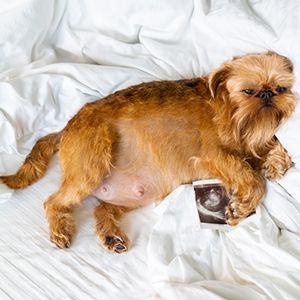 Radiographs (x-rays): The puppies’ bones start to mineralize after 45 days of gestation. We recommend taking a radiograph one week prior to the anticipated whelp date. At this time the puppies are well mineralized, allowing an accurate count. It also allows assessment of puppy size and position, and gives another technique to estimate the whelp date based on the bones that are visible. It is best performed with an empty stomach and colon, so that the puppies are easier to see. Radiographs are also used after whelping to ensure that no puppies remain.
Radiographs (x-rays): The puppies’ bones start to mineralize after 45 days of gestation. We recommend taking a radiograph one week prior to the anticipated whelp date. At this time the puppies are well mineralized, allowing an accurate count. It also allows assessment of puppy size and position, and gives another technique to estimate the whelp date based on the bones that are visible. It is best performed with an empty stomach and colon, so that the puppies are easier to see. Radiographs are also used after whelping to ensure that no puppies remain.
Behavior: It is not reliable to use physical and behavioral changes as an indicator of pregnancy as these are highly variable signs. Many bitches will have some loss of appetite early in gestation, but some will have an increased appetite. Eventually, weight gain and increased nipple size occur. Late in gestation appetite decreases as the stomach is compressed. Some dogs may become moody or clingy, but others show few behavior changes.
Diet & Exercise
A common mistake is overfeeding a pregnant bitch. For the first two-thirds of the pregnancy, she does not require any more calories than she consumed before her pregnancy. Continue to feed her the same amount of the well-balanced, complete nutrition diet she received prior to pregnancy.
At around week five, the puppies start to grow significantly, and this increases her calorie and nutrient requirements. If she was receiving a diet labeled as complete for all life stages, start to feed more of the food per day in frequent, small meals. If her diet was a standard maintenance diet, you may need to transition to the diet you will use to feed the puppies.
The only exception is for large breeds. The large breed puppy formula is not complete for lactation, so feed her a performance diet instead. By the end of the pregnancy, she will need 25 – 30% more food per day than she consumed prior to pregnancy.
The bitch should gain between 15 – 25% or her original body weight by the end of pregnancy. Large breed or overweight dogs, or those with small litter sizes need to gain less weight than small breed or underweight dogs, or those with large litters.
No diet supplements are recommended other than the feeding guidelines above. Adding supplements to the food creates a nutritional imbalance, and over-supplementation can be dangerous to both the mom and the pups. The only exception to this is a bitch with a poor appetite throughout pregnancy. It is normal to have some appetite loss early in gestation, and again at the end of the term, but otherwise she should have a healthy appetite. If her intake is poor, consult your veterinarian before altering the diet.
Exercise and Lifestyle
Minimizing stress during pregnancy is important, so for the most part it is helpful to maintain her regular routines, including daily exercise. Regular, low-impact exercise is beneficial.
For high performance dogs, avoid activities that push her to exhaustion or risk trauma to the abdomen. Replace them with long walks or low-impact, steady running. A dog that was not active prior to pregnancy should not start a vigorous exercise regime, but a daily walk is recommended.
Preventive Care
Preventive care such as vaccines and parasite prevention are critically important for the health and well being of both mom and puppies. Before breeding, make sure your dog is up to date on all of her vaccines, tests, and parasite prevention.
Vaccinations
Vaccinations should be up to date prior to pregnancy. During pregnancy, modified live vaccines cannot be given. Vaccination of the bitch creates protective proteins which are passed to the pups through the mild in the first 48 hours of life. Without these, the pups are at increased risk of infection. These pups should be strictly quarantined from other dogs, and their vaccinations need to start earlier than pups whose mother had good immunity. If there is any question, vaccine titers can be measured.
Parasites
Similarly, parasite control should be in place prior to pregnancy to reduce risk of transmission to the pups. Test for heartwom disease and keep on a monthly heartworm preventive. We recommend Interceptor Plus, as it also helps to control roundworms, hookworms, whipworms and prevents flea eggs from hatching.
Roundworms: The canine roundworm has a dormant stage that exists within the muscle tissue of the adult dog. During pregnancy, these immature worms reactivate and cross the placenta to infect the pups. This happens even if the bitch tests negative for roundworms on fecal tests.
Hookworms: Hookworms can also be transmitted across the placenta. If she is at high risk for a heavy parasite load, mom can be treated with a dewormer called fenbendazole from day 40 of gestation to two weeks after whelping, to reduce the transmission to the pups. Otherwise, maintaining monthly Interceptor Plus is usually sufficient. The pups should be dewormed for roundworms and hookworms at 2, 4, 6, and 8 weeks of age, and monthly thereafter, regardless of the preventives used for the bitch.
Fleas and ticks: Ensuring excellent flea control prior to pregnancy is the best method of prevention. All other animals in the household should have a topical preventive. There are no topical products currently labeled as safe for use during pregnancy and lactation. However check with your veterinarian to see if there are any newer products that can be safely used. Avoid areas known to have a high risk of tick exposure, and check daily for ticks.
Exposure to Other Dogs
Any dog that the bitch routinely associated with prior to pregnancy is probably safe for her to continue to be with, unless the dog has recent exposure to dogs outside the family group. Places with many strange dogs, such as shows, events, and dog parks, are not recommended due to the risk of exposure to infectious diseases and parasites. She should be completely isolated from contact with unfamiliar dogs during the last three weeks of pregnancy and the first three weeks after whelping to reduce the risk of infection with canine herpes virus.
Labor & Delivery
The big day is getting close! Here are some tips for preparing for labor & delivery to help ensure all goes smoothly.
Prior to Labor
Set up the whelping area around a week or so prior to whelping, and allow the pregnant dog to check it out. Whelping areas need to be out of the normal traffic flow, warm, and dry. All materials need to be able to be cleaned thoroughly. Good hygiene is vital to controlling infection early in the puppies’ lives.
Key Whelping Box Characteristics:
- Easy to keep scrupulously clean.
- Nonporous surface.
- Added warmth – with a cooler side and a warmer side.
- Prevention of fire hazards.
- Bitch is able to enter and exit easily, while still containing the puppies.
- Internal rail to protect a puppy from being compressed against the side.
Radiographs:
Knowing the number of puppies in the litter helps you to prepare the materials you will need. We recommend a radiograph one week prior to the due date. It is best if the she has not been fed and has defecated, because this makes it easier to see all the pups. A radiograph also allows a final estimate of the due date based on the fetal development, and assessment of the size of the pups relative to the dam.
Supplies:
- A small scale such as a kitchen scale for weighing puppies
- Colored ribbons or collars to help label & identify individual puppies.
- Notebook to record time of birth, weight and identifying features of each puppy. Also useful for tracking weight and other notes as puppies grow.
- Plenty of small, clean towels for the whelping.
- Unwaxed dental floss to tie off umbilical cords.
- Mild antiseptic, such as betadine, to dab on the umbilical stumps.
- Puppy milk replacement, such as Esbilac, alone with bottles and feeding tubes, just in case.
- Your camera!
One Week Prior to Labor:
- Start taking the dam’s rectal temperature one week prior to her whelp date.
- Take the temperature 2 – 3 times a day at the same times of the day
- Take it when she has been at rest for at least 20 minutes.
- Record the temperatures in your notebook.
A drop in emperature of at least one degree below what it has normally been at that time of day is an indicator that labor will start within 12 – 24 hours. Normal temperature is between 99.5 – 102.5 degrees F. If there is no sign of stage 1 labor within 24 hours of the temperature drop, call your veterinarian.
Labor
Stage 1 of Labor
The temperature will return to normal or slightly higher than normal once stage 1 labor starts. During stage 1, contractions are starting and the cervix is dilating. She may be very restless – panting, shaking, pacing, seeking nesting areas, digging, and whining. Vomiting, diarrhea, or loss of appetite may occur. This stage lasts 6 – 8 hours; call the veterinarian if the bitch does not progress to stage 2 during this time. Stage 1 often takes place during the day.
Stages 2 and 3 of Labor
Stages 2 and 3 often take place at night. Stage 2 labor is the hard contractions that result in the birth of a puppy. Stage 3 labor is the passing of the placenta. It is common to see more than one puppy followed by more than one placenta. The bitch may want to eat the placentas. In general, we recommend preventing this as they will most likely vomit them back up.
There are many videos available on YouTube to see what a normal birth looks like. Bitches may or may not cry out. The puppies are born covered by the birth membranes. The bitch will tear at these with her teeth, then start licking the puppy vigorously. She will also break the umbilical cord.
Helping After Delivery:
The pups require significant stimulation to get them breathing and crying. If the dam does not do these jobs, or is aggressive toward the newborns, you will need to take the puppy in a clean towel and rub it to remove the membranes and provide the stimulation. You can tie a knot in the cord or tie it off with unwaxed dental floss about 1 inch away from the puppy. Dab the stump with the mild antiseptic, such as betadine. Approximately 40% of pups are born hind feet first!
Delivery Timing:
Expect about 20 – 30 minutes of hard straining prior to each pup’s birth, with 15 – 30 minutes of rest between pups. Call a veterinarian if there is no pup after 30 minutes of hard straining, or if there is 1 – 2 hours of weak or intermittent straining with no birth.
A dark green vaginal discharge is normal when a placenta separates from the uterus. If this discharge is present but no puppy is born within 1 hour, call the veterinarian. It is also normal for a bitch to rest with no contractions up to 2 – 4 hours between puppies, but if it goes longer, and you know there are remaining puppies, call the veterinarian. Depending on the litter size, the entire litter will typically be delivered within 12 hours.
During the resting phase between deliveries, examine the newborn for birth defects (especially a cleft palate). Record the birth weight in your log book, along with any identifying features. Then ensure that the pup starts nursing immediately. This is critical to the pup, but also helps release hormones which will lead to the birth of the next pup.
After All of the Pups Have Been Born:
It is normal for the bitch to spike a fever in the 24 to 48 hours following birth. Clinical signs of illness should not accompany this fever.
Normal vaginal discharge after parturition should be odorless and may be green, dark red-brown or bloody and may persist in small amounts for up to 8 weeks.
Care of the Bitch After Whelping
After all the puppies are born, cleaned and fed, it is time for mom to get some rest. Offer water in small amounts frequently. Most new mothers do not want to eat right away, so give her time.
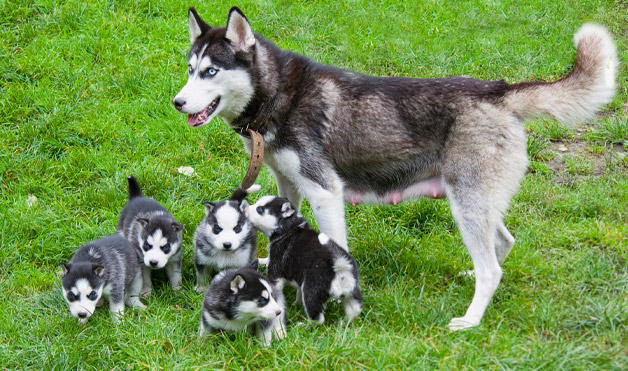
During the first few days of taking care of the bitch after whelping:
- Make sure she is eating and drinking well.
- Keep her hind end clean, as there will be discharge for a while.
- Go outside with her to make sure that she is urinating and defecating normally.
- Diarrhea is common after whelping, and a probiotic supplement may help.
- Once the puppies start nursing vigorously, the mother’s appetite usually increases significantly.
- Lactation is the greatest energy demand a dog will every experience. Palpate over the bitch’s ribs regularly to check her weight. You should be able to feel them easily, but not see them easily.
Most health problems occur in the first few weeks after the birth. Monitor the mother carefully, take her temperature if she seems “off” at all, and call the vet if something just doesn’t seem right. The three most common health problems after whelping are metritis, ecalmpsia and mastitis.
Metritis
Metritis is inflammation and infection of the lining of the uterus. It can occur during the first week after whelping. The risk is higher if the delivery required assistance, and can also be caused by a retained puppy.
Contact a veterinarian if any of these signs are noted:
- Fever
- Foul-smelling vaginal discharge
- Listlessness
- Loss of appetite/vomiting
- No interest in the puppies
- Decreased milk production
Treatment consists of antibiotics and supportive care.
Eclampsia
This condition results when the bitch has trouble supporting the calcium demand of lactation. Calcium supplementation during pregnancy predisposes a bitch to this condition, and small breed dogs are at increased risk regardless of supplementation. This condition generally occurs in the first three weeks of lactation. A veterinarian should be consulted immediately if any of the following are noted:
- Nervousness and restlessness
- No interest in or even aggression towards the pups
- Stiff, painful gait
Progressing to:
- Muscle spasms
- Inability to stand
- Fever
- Seizures
Treatment consists of intravenous calcium supplementation, along with fluids and often glucose. One she has recovered, a calcium supplement is usually given for the remainder of the lactation period. The risk of occurrence is decreased by feeding a high quality diet, avoiding calcium supplements during pregnancy, and ensuring that mom is eating well after whelping.
Mastitis
Mastitis is inflammation and infection of the mammary glands. Normal glands are enlarged, but soft. Diseased glands are red, hard, and painful. In general, the bitch does not act sick; the disease is confined to the mammary tissue. The bitch may be sore and discourage the pups from nursing; however, it is important to keep the pups nursing the affected glands. This is not harmful to the puppies and helps flush out the infected material. Hot packing may be helpful. Most cases are treated with antibiotics.
In rare cases, mastitis is caused by aggressive bacteria that can cause gas to form in the glands, or the mammary gland tissue may be so damaged that it dies (necroses). This is a much more serious condition, and requires significant veterinary intervention. Symptoms include signs of sickness in the bitch, and glands that turn dark red to black in color, feel “bubbly” under the skin, or rupture.
When to Call a Vet During Labor & Delivery
Once all the work of arranging the breeding of your dog has resulted in a successful pregnancy, now comes the anticipation and worry of waiting for the puppies to be born. In most cases the dog instinctively knows what to do, but being prepared and knowing when to call a vet during labor & delivery is important for the health of both the mother and the puppies. Here are the signs to watch for, and when in doubt, you can always call us with questions or concerns.
Abnormal Vaginal Discharge:
- Green or red discharge with no signs of labor
- Pure blood
- Foul smelling pus
Prolonged Gestation:
- No labor > 64 days from ovulation (> 66 days from LH peak)
Signs of Pregnancy Toxemia:
- Fever (rectal temperature >102.5 F)
- Depression
- Weakness
- Rigid gait
- Seizures
Signs of Obstruction:
- Pain
- Pup not positioned properly or stuck
No Progress After:
- Stage 1 labor longer than 24 – 36 hours
- Stage 2 labor longer than 2 – 4 hours
- Hard straining with more than 30 minutes between pups
- Weak/intermittent labor with more than 2 – 4 hours between pups
- No labor with more than 4 hours between pups
- Entire labor lasting longer than 24 hours
Caring for Orphaned Puppies
Occasionally a dog may be unwilling or unable to take care of her puppies on her own, or you may find yourself caring for orphaned puppies. This is a project that requires a lot of careful attention and care to ensure the puppies grow up healthy and happy.
Hand Feeding
If you need to hand feed puppies it is not recommended to use cow’s milk. Their mother’s milk is more concentrated and has twice the level of protein, almost double the calories and more than twice the calcium and phosphorous content. We recommend a commercial puppy formula, carefully following the manufacturer’s instructions.
On average, the following guidelines will help you decide how many calories a newborn puppy requires each day. A puppy may require one-quarter more or less than these guidelines, depending upon its individual needs.
- First Week: 60 to 70 calories per pound of body weight, per day
- Second Week: 70 to 80 calories per pound of body weight, per day
- Third Week: 80 to 90 calories per pound of body weight, per day
- Fourth Week: 90-plus calories per pound of body weight, per day
Remember that puppies grow very rapidly, so make sure you weigh them every day before you calculate how much to feed them.
Things to Keep in Mind
- You may need to start with slightly less formula at each feeding and gradually increase the amount as the puppy responds favorably to hand feeding.
- Steady weight gain and well-formed feces are the best evidence of satisfactory progress.
- If diarrhea develops, immediately reduce the puppy’s intake to half the amount previously fed, and then gradually increase it again to the recommended level.
- Diarrhea in newborns can be very dangerous, so consult a veterinarian for advice.
Proper Feeding Techniques:
- Never prepare more formula than is required for any one day, because milk is a medium for bacterial growth.
- Maintain sanitary conditions at all times.
- Before feeding, warm the formula to about 100 degrees or near body temperature.
- Using a bottle and nipple, hold the bottle at an angle to prevent air bubbles.
- The hole in the nipple can be enlarged slightly with a hot needle to let the milk ooze out slowly when the bottle is inverted.
- The puppy should suck vigorously, but should not nurse too rapidly.
- Consult a veterinarian if the puppies are not nursing well.
- You may need to resort to tube feeding, which is best taught by a health professional.
Puppy Health & Hygiene
When caring for orphaned puppies, they must be stimulated to defecate and urinate after each feeding. Ordinarily the mother’s licking provides this stimulation, but orphaned puppies will need human intervention. Gently massage the puppy’s anal region with a cotton ball that has been dipped in warm water.
Gentle body massage is also beneficial for any hand-reared puppy. Massage stimulates the circulation and thoroughly awakens the puppy. Stroke the puppy’s sides and back with a soft cloth. The best time for a massage seems to be when the puppies are waking up, while you’re waiting for the formula to get warm.
Weaning Puppies
Three Weeks Old
For most breeds, weaning puppies begins at about three weeks of age. You can start them off by offering a pan of formula in place of their mother’s milk. Next, replace the formula with a combination of thin cereal and formula.
Hand-fed puppies may be removed from the bottle, and meat or high quality canned dog food may be offered in addition to the cereal/formula mixture.
Five Weeks Old
At five weeks, discontinue the cereal and replace the formula with a solution of equal parts evaporated milk and water. A high-quality dry puppy food can be mixed into the meat and canned food.
To avoid digestive upsets, be sure to introduce all changes in food or feeding schedules gradually.
Find Loving Homes
A responsible breeder makes sure that every single puppy goes to an owner who will provide it with the same love and devotion for life that the breeder has provided for the first eight or ten weeks. This means careful screening and evaluation of each person or family interested in getting a puppy.
By this time you have learned everything you can about your breed, and you know all the pros and cons of ownership. It’s important to share this information, including the negative aspects with prospective puppy owners.
You should be ready to explain why a dog requiring a lot of coat care or training is not the best match for a workaholic, or why a tiny dog may not be appropriate for a family with small, active children. You must be absolutely committed to placing your puppies only in homes you believe will provide excellent care. Many breeders have buyers sign a contract that defines the type of care they expect, what to do if they can no longer care for the animal, and guarantees regarding genetic defects.
